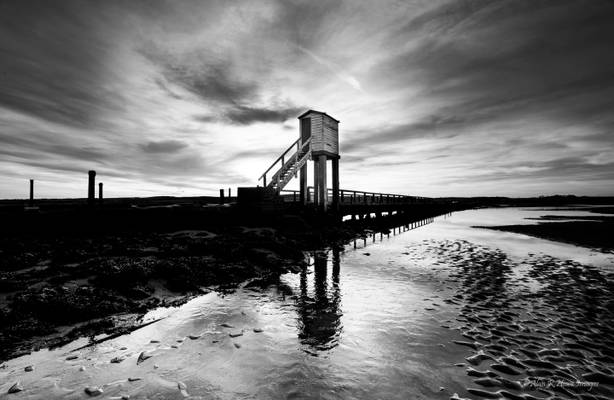
Holy Island Sands

by AlanHowe
Walking the Pilgrim's Way to Holy Island
Ever since 635, when King Oswald gave the Holy Island of Lindisfarne to St Aidan to establish his monastery, the island has been a place of pilgrimage. The road was not constructed until 1954 and until then the vertical poles were the only indicators of the safe route between the mainland and island. The sight of the poles stretching across the sand and mud is one of the most iconic views in Northumberland and to walk the route away from the road and follow in the footsteps of our medieval ancestors is a wonderful experience.
Walking across the Pilgrim's route onto Holy Island is a very different walking experience and unlike any other country walk in Northumberland.

These vertical poles mark the safe route across the tidal sands and mud of the Pilgrims Way, the ancient crossing way from the English mainland to...

by Heike Rosenbaum
What a heavenly light this was! I was on my way to Lindisfarne Castle but stopped the car on the causeway road when I saw these intense magenta, pink and orange hues. The stillness of this place was magical.
"Alone in that country where poems are born in the stillness of things... Purple is the colour of the world and the day becomes a stretch of open water freckled by rain, depthless and pure. Alive. Ready for the challenge of being." (Richard Wagamese)
Holy Island is a tidal island and can only be accessed twice a day via a causeway road.
Holy Island, Northumberland, North-East England
Thank you for all your views and comments. They are very much appreciated.

In the year 635, King Oswald gave the Holy Island of Lindisfarne to St. Aidan to establish his monastery, and ever since the island has been a place...
Thanks to all Phoide contributors to Holy Island Sands!
Most notably AlanHowe and Heike Rosenbaum.
